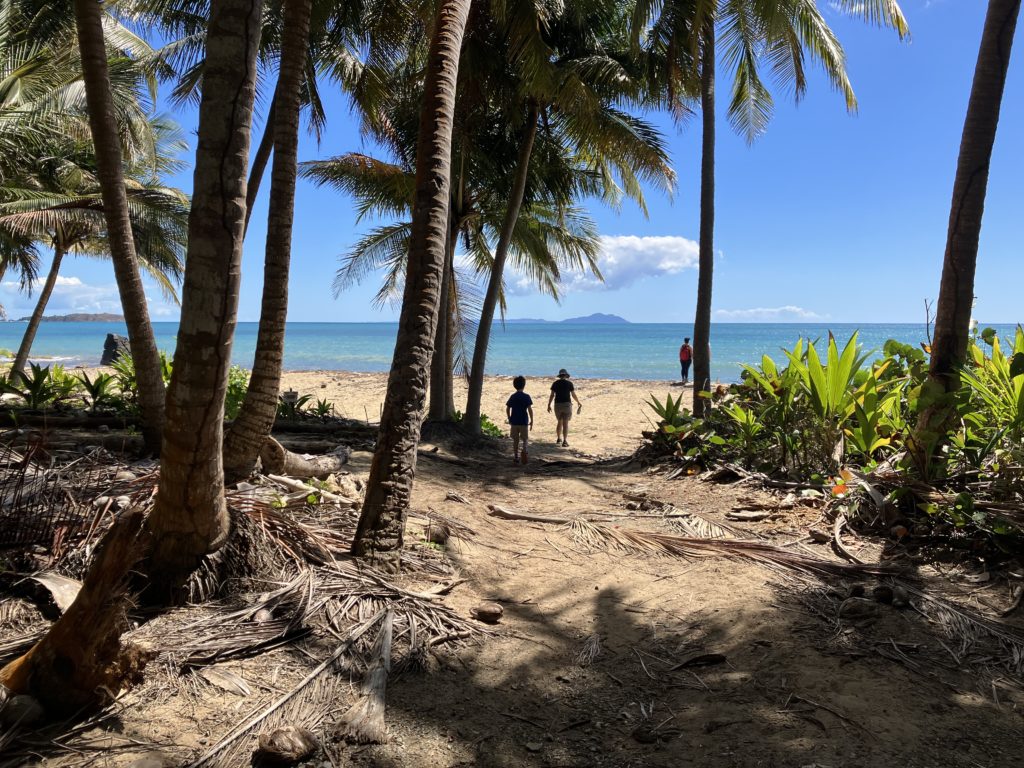The backdrop: For the past several years, we’ve visited warm spots in early March with our older son and his family: San Diego, California, in 2019. Bermuda in 2020 (days before the COVID-19 pandemic in March closed most of the world). Sanibel Island, Florida, in 2022 (only months before Hurricane Ian destroyed access to the island off the west coast of Florida). This year, we decided on Puerto Rico, a place none of us had visited. I was excited for warm weather, exploring the rain forest, and grandchildren hugs!
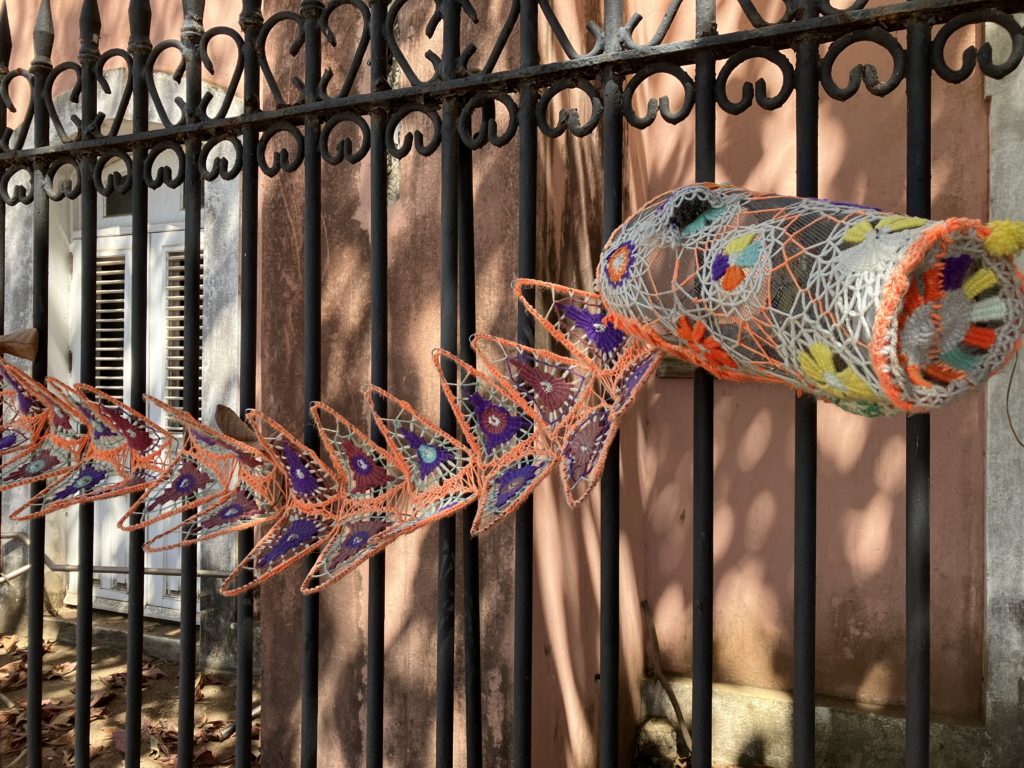
A little history: My knowledge of US territories is woefully incomplete. I read “How to Hide an Empire, a History of the Greater United States,” by Daniel Immerwahr, in preparation for the trip. What an incredible eye-opener on so many levels. Puerto Rico has never been an independent country. The Spanish occupied Puerto Rico commencing in the 1500s through 1890s. In 1898, Spain ceded the territories of Philippines, Guam, and Puerto Rico to the United States to end the briefly-lived Spanish American War.
San Juan, the capital of Puerto Rico, is the oldest city in the United States. Puerto Ricans are American citizens; however, Puerto Rico is not a state but an unincorporated territory of the United States. Its citizens do not have the right to vote in federal elections. The citizens are self-governing, but their president is the President of the United States. Calls for statehood have come periodically. That decision is made by the US Congress, not by the people of Puerto Rico. Mixed opinions abound on that question—this is not a political post so independent reading is recommended on this topic.
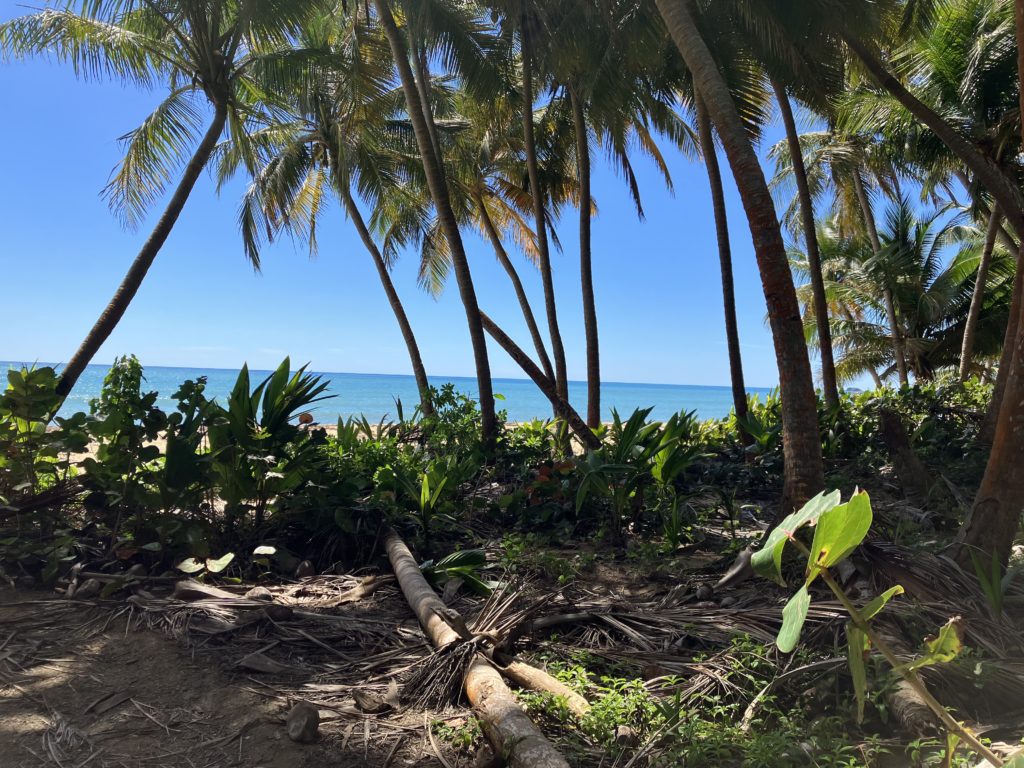
Puerto Rico was so named (“rich port”) because of its gold, silver, sugar and coffee. It is strategically located (certainly for military purposes) south of the continental United States, slightly southeast of Cuba and the island of Haiti and the Dominican Republic. It is closer to Venezuela than it is to Florida and the same longitude as Bermuda and Halifax, Nova Scotia, Canada. The water to the east of Puerto Rico is the Atlantic Ocean, to the west is the Caribbean Sea. Puerto Rico is one corner of the infamous Bermuda triangle, along with the island of Bermuda and the city of Miami. It was a “sister” country to Cuba until Castro came into power in the 1950s, after which time all formal contact ended and has remained so.
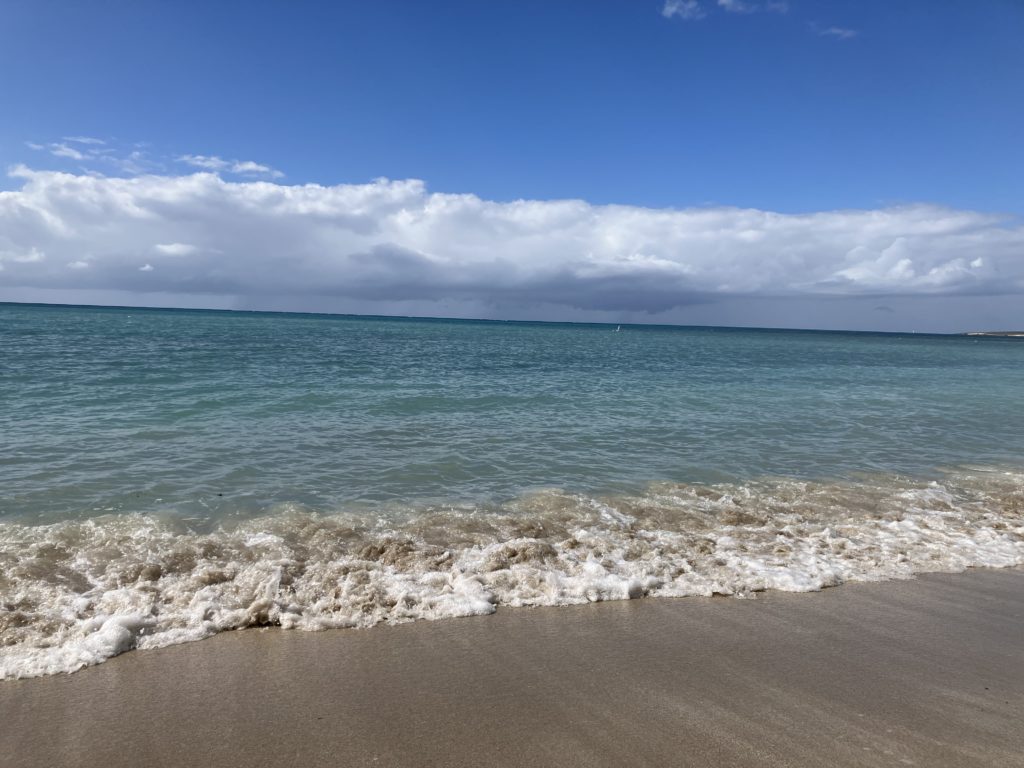
Five days in the sun: Doug and I met Christopher and his family at Luis Muñoz Marín International Airport. We rented a mini-van (six people + one car seat) and drove south, then west in the orange glow of the sunset. We saw the dance of Neptune and Jupiter in the darkening sky. We arrived at our hotel near Guanica in the dark, certainly past the grandchildren’s bedtime. No matter, they immediately ran to the sandy beach. Our granddaughter stripped to her tiny shorts, dancing, running and jumping in the waves of the Caribbean. Our grandson started building sandcastles, his form of heaven. We’d arrived, an idyllic place for spring vacation.
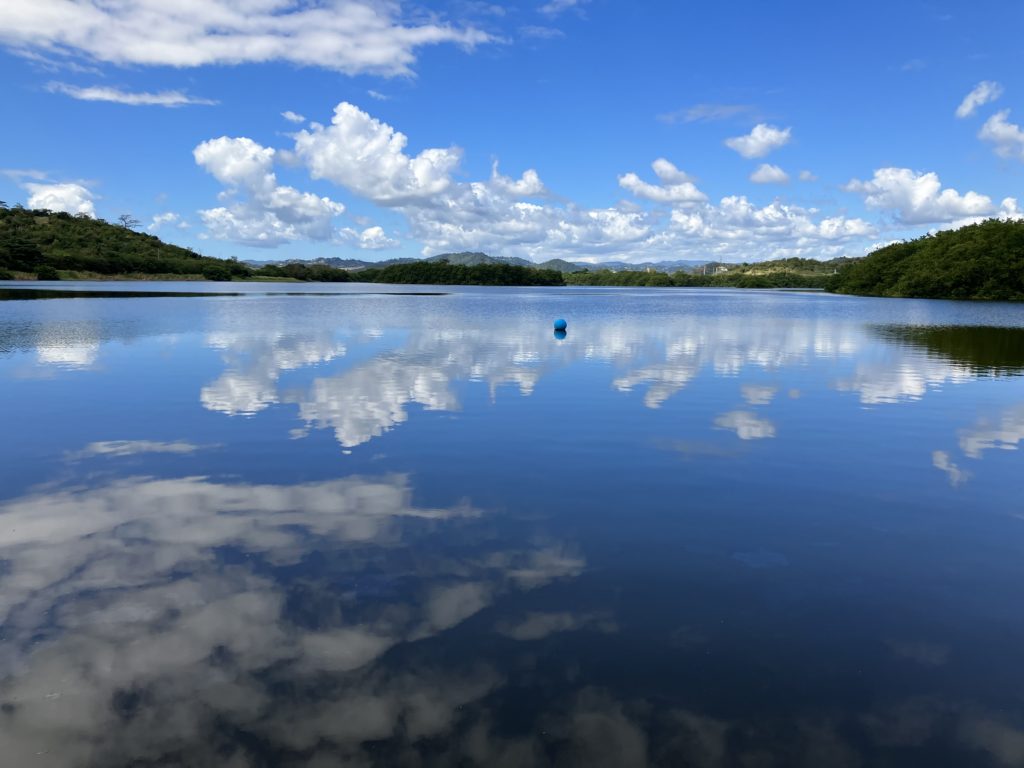
Guanica: Digging and building in the sand and swimming in the ocean were Sunday’s highlights. I tried (emphasis “tried”) my typical early morning run. My body was clearly not used to intense sun, high temperatures and humidity. I felt slower than a turtle, but I welcomed not wearing layers of clothes. How can one not run with joy with many colored blossoms on the bougainvillea vines tangled with huge cocoanut palm trees as the scenery? I relished the quick dip in the ocean to help cool me down after run. This could be paradise.
The day was filled with building sand castles, swimming out to the trampoline dock anchored off the main beach (my son ferried the grandchildren on his back as the water was a little too rough for them to swim), drinking lemonade by the resort’s pools, and endless games of UNO. We slowly acclimated to the slow pace, hot weather, and outside meals—prelude to busier days ahead.
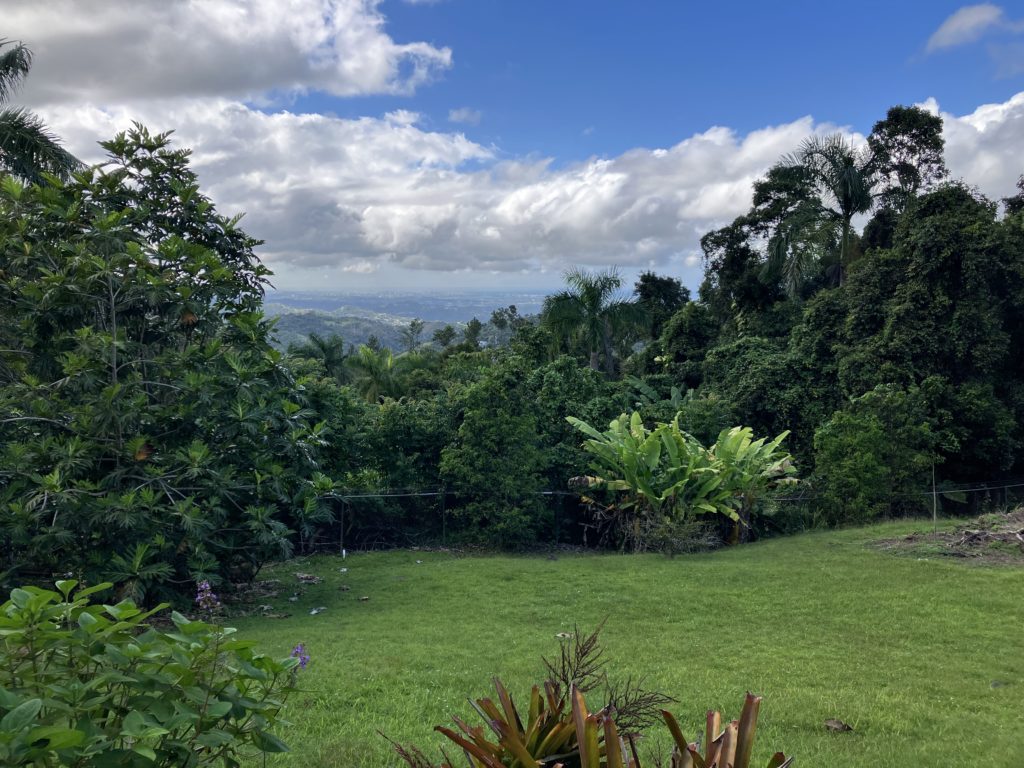
El Yunque Rain Forest: We left the coast on Monday morning (after a morning run and quick swim in the ocean) to our next destination, El Yunque National Park. It’s the only tropical rain forest in the US Forest Service national park system. Our AirBNB was located on the back side of the forest with direct gorgeous views to San Juan (shimmering with the sun when we arrived mid-afternoon but glowing with city lights, and noisy with hundreds of insects and birds, at night). We hiked a few miles on El Toro trail, our shoes getting stuck in sticky mud (it is a rain forest after all), climbing among huge bamboo trees, palms, and banana trees.
Puerto Rico has a huge diversity of flora and fauna (mostly reptiles, birds, and insects; only a few primates, like eleven species of bats, as the rain forest is too small for bigger mammals). Our grandson tried to see some large snakes (boas) but fortunately they were hiding! He did find a number of large iguanas, out and about. Our granddaughter, four years old, ran parts of the trail, her long legs a plus for ups and downs over tree roots, rocks, and slippery mud.
Back at the house, we discovered we had no hot water, only a cold outdoor shower to clean our muddy shoes and legs. A slight inconvenience, perhaps, but part of the adventure! Once again, we spotted Jupiter and Neptune in the night sky before the dancing lights of San Juan lit up the sky. So peaceful and private.
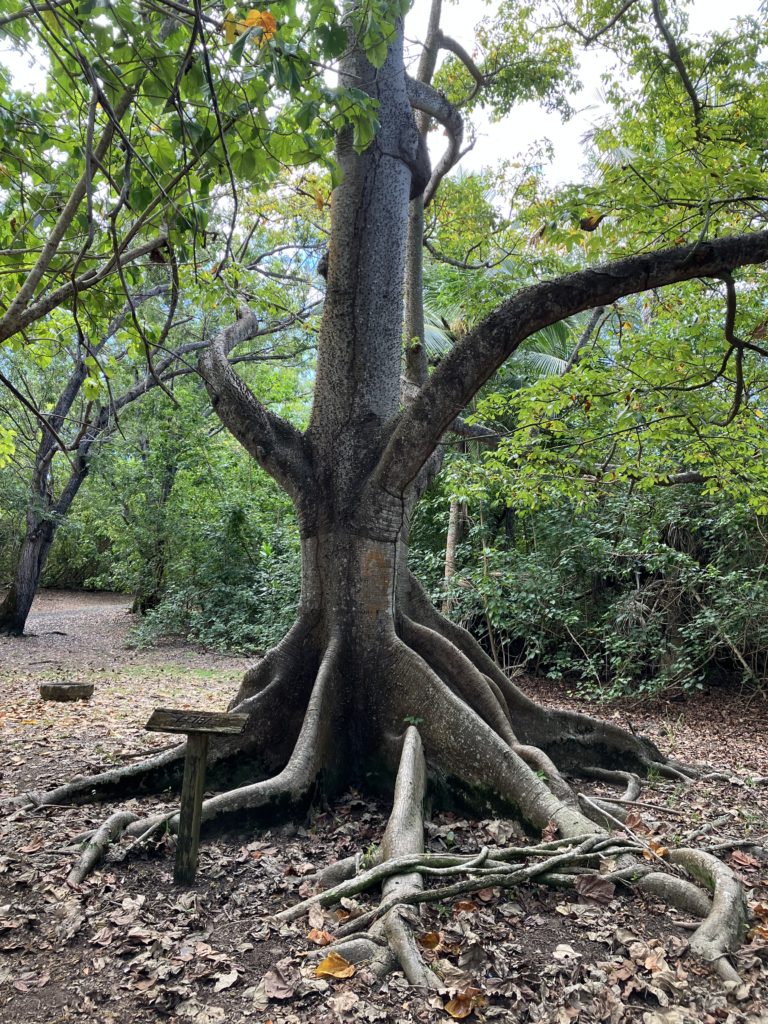
Tuesday we planned on hiking the longer trails in El Yunque. Unfortunately, we’d failed to get reservations, necessary to manage the people traffic in the rain forest. Christopher, driver, chef, and tour guide, quickly pivoted. He found some lagoons with kayaking and turtles close to the Caribbean Sea and not too far from the house (we were on the edge of a mountain with steep, narrow roads canopied by huge palm trees and philodendron bushes). We struck out: the kayak vendor was closed for the day (no notice on their website). But there was a hiking, though, to a serene lagoon with puffy clouds perfectly reflected between the blue sky and the blue water. Another quarter mile or so was the beach, covered with debris from one of the recent hurricanes. Not such a safe place for the grandchildren to play so after some talking we decided to try El Yunque again. We were told that no reservations were required for the Angelito Trail–we couldn’t pass up the opportunity to hike part-way into the wetter side of the rain forest. Another drive to the trailhead, where we walked along a recently-graveled path (the work of some college students on their “alternative spring break”) to a swimming hole: kids were jumping from a rope swing to the water, floating down stream among boulders, laughing and talking. Such a magical place.

Old San Juan: Being in the rain forest was so encompassing; in reality it was only a 45 minute drive to San Juan, a metropolis of over 2 million people (more than half of the population of the country). We splurged and stayed in a converted Carmelite convent in the middle of Viejo San Juan, adjacent to one of the oldest cathedrals in the Americas and a block from San Juan Gate, the primary gate used to enter the city during the Spanish occupation (1500s-1898).
We walked and walked the next day and a half around the old city, once completely surrounded by Fort El Morro, almost sixty feet high and twenty feet thick. It’s a citadel built by Puerto Ricans (then occupied by Spain) against foreigners, including pirates (often sponsored by the British and other competing European nations). Today, the Fort has a pedestrian walkway between the walls and the crashing Atlantic Ocean. Salt, wind, water, and plants are now the primary destructive forces to the walls, no longer canons and other forms of bombardments. The huge fields in the center of the enclosure once housed civilians during times of attack, the military during occupation, and executions by gunfire. Today we only saw families having picnics and flying kites, school kids playing soccer, and tourists, like us, walking across the fields to find a place for lunch.
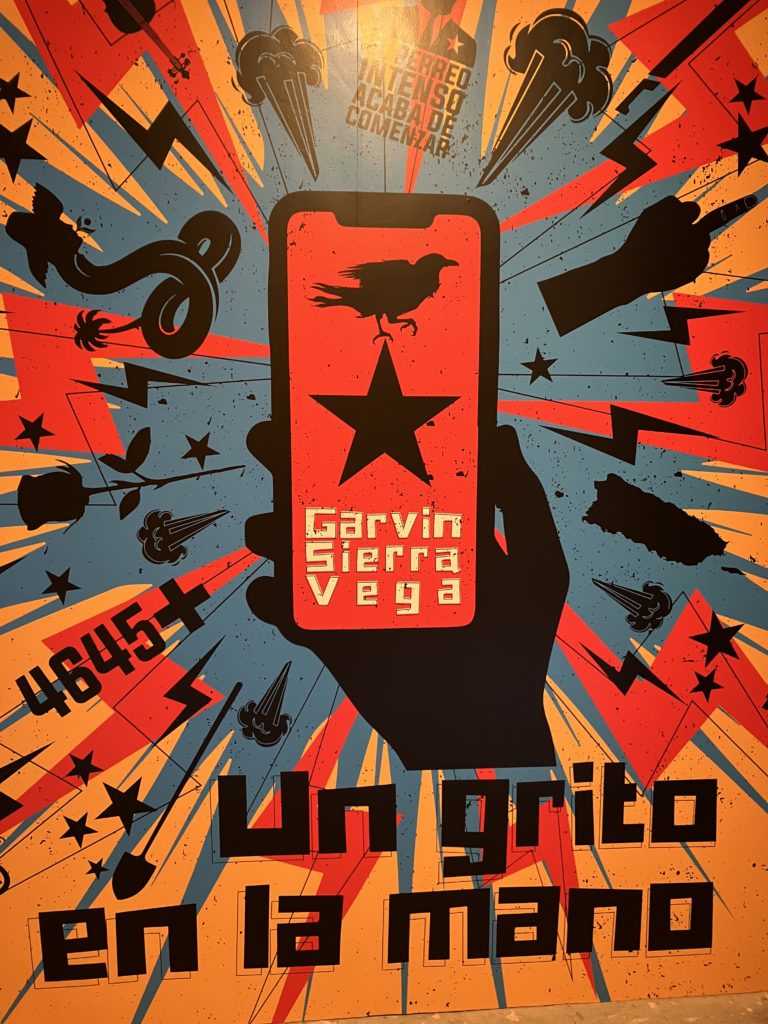
The Museo de las Americas is s fabulous museum of anthropology, art, and history. A special exhibit “An Outcry in the Hand,” (Un Grito en la Mano”) displayed huge, powerful posters of social justice protests. The permanent exhibits were filled with handcrafts, artifacts, and stories about the early days in Puerto Rico, painting a picture that helped our young grandchildren understand better this country (try explaining the difference between a state and a US territory to four and seven year olds—or even us elders). Impressive museum and thoughtful exhibits.
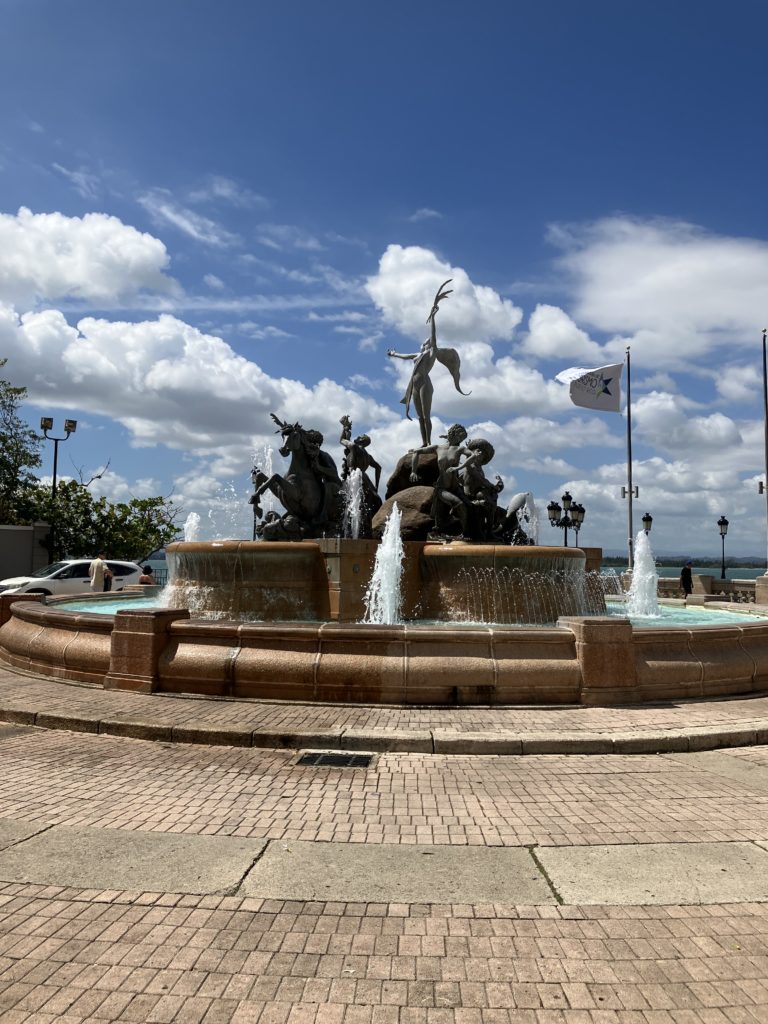
Doug and I went on a walking tour of Old San Juan on our last morning in the country. We learned so much about the early days of the US territory: German submarines off the coast of Puerto Rico during World War II; heavy US military installations; drunken sailors and brothels (until the 1970s); the intertwining of religion and state affairs. So much history—good and bad—that continues to influence the mainland’s relationship with Puerto Rico. A betwixt and between place that needs better understanding, but a place we were privileged to visit.
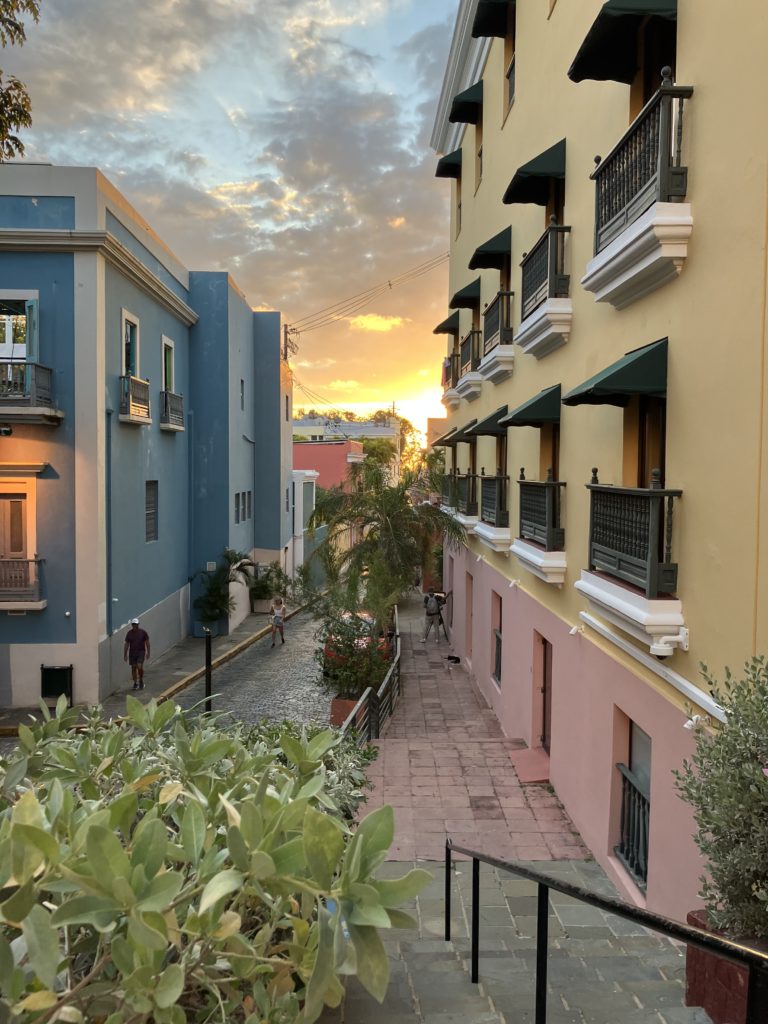
The ambience of Old San Juan, with its pastel buildings, constant music, cool courtyards, colorful flowering trees, and glimpses of blue water wherever one looked—will certainly entice us back to this unique place.
